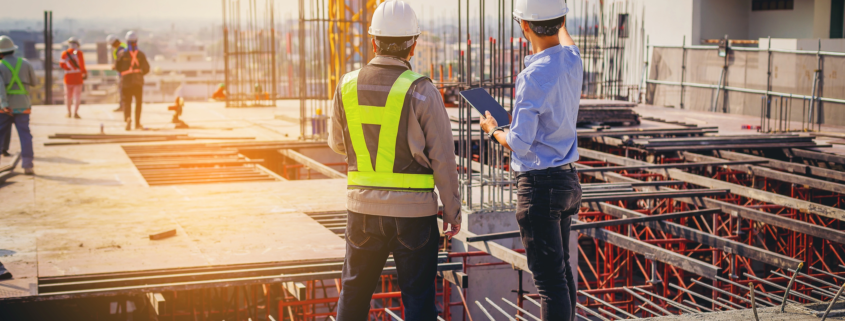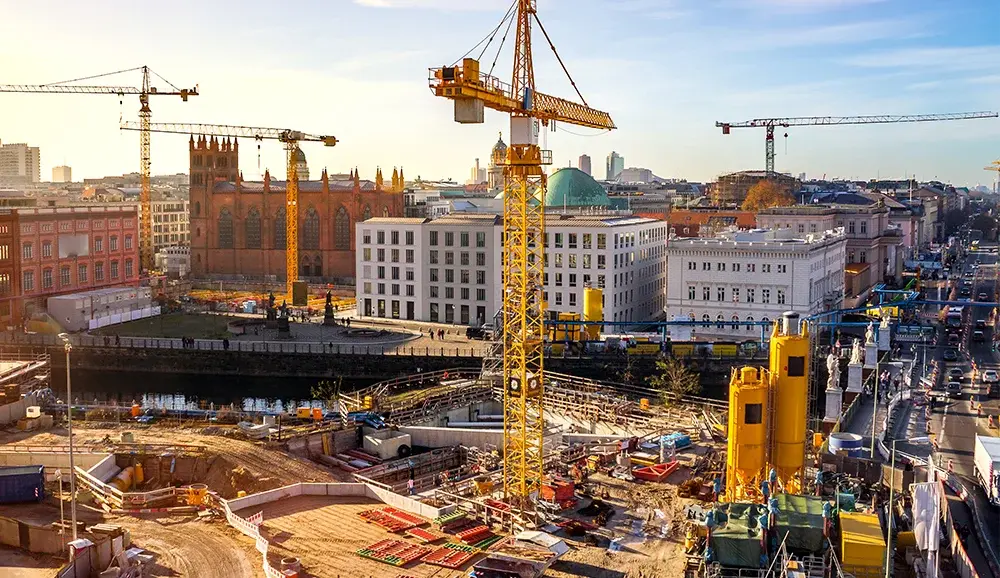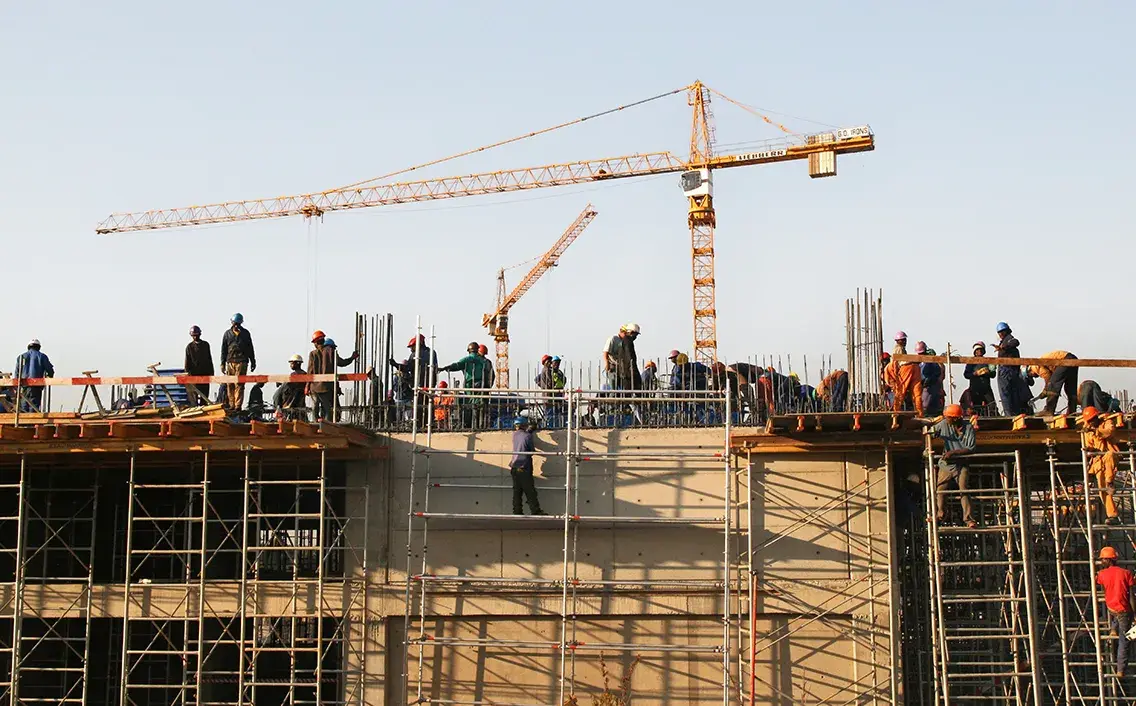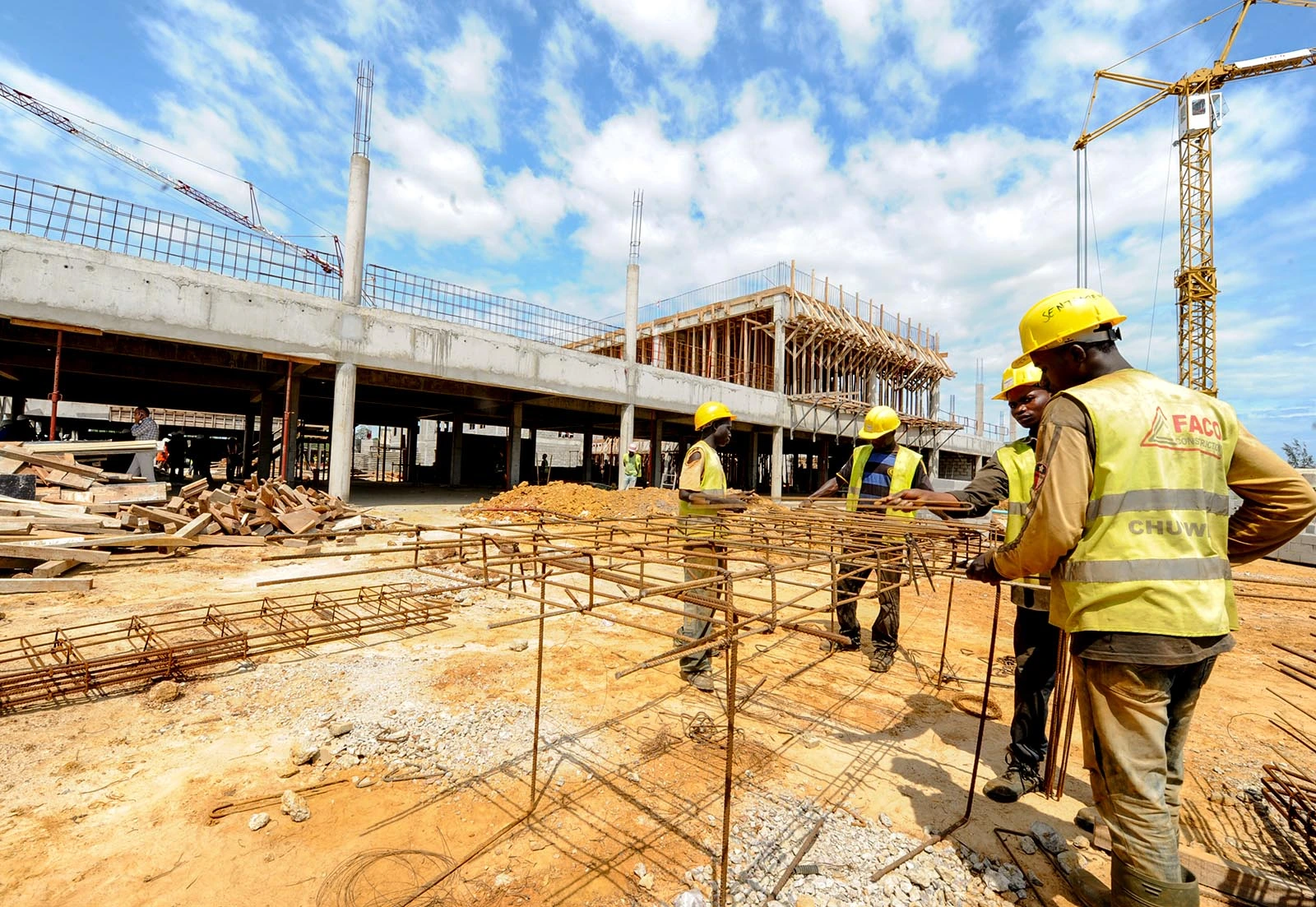What is an Infrastructure Project? And Types of Infrastructure Projects in Construction
Infrastructure is the sum and substance of the world. Without infrastructure, it is not possible to maintain the continuity of life. It binds people together, reduces the distance, uplifts national development, and turns the world into a global village. Imagine a city where people can communicate with each other easily, movement of goods occurs seamlessly, and power brightens the world reliably. This is not a futuristic city. One can create such a city based on developing robust infrastructure and pursuing infrastructure projects.
You must be thinking of what it means by infrastructure. Because when we hear of infrastructure, usually roads, railways, highways, and bridges come to our minds. Undoubtedly, these components are part of the infrastructure. In fact, in the construction industry, the scope of infrastructure is extended beyond these elements. It is usually referred to as the physical and organizational structure and facilities that are needed for the smooth operations and working of a society. In a nutshell, one cannot ignore the importance of infrastructure in industrialization, urbanization, and national development. If you are new to the construction industry and want to know about infrastructure comprehensively, this is the right platform. This blog will explore the meaning & scope of infrastructure projects and their various types. Just hold up your horses!
For a closer look at how building design tools support infrastructure planning, explore our post on the Top 10 Best Free CAD Software in 2025.
What is Infrastructure & Its Types
Infrastructure is the services and facilities required for the economic development of a country. It includes both intangible and tangible systems, supporting the daily functioning of the country, communities, and various institutions. It is essential for facilitating the services of communication, transportation, public services, and power generation. There are different types of infrastructure based on the nature of the infrastructure.
Physical Infrastructure
When one talks about Hard Infrastructure, it means he is referring to the physical and tangible infrastructure surrounding societies. It includes various examples!
- Energy infrastructure
- Communication facilities
- Transportation
- Water and Drainage Systems
- Telecommunication
- Commercial Buildings
Social Infrastructure
It can be called Soft Infrastructure. It involves the institutions of governance and social frameworks, responsible for supporting human development and welfare. The examples are:
- Healthcare units
- Educational systems
- Law Enforcement infrastructure
- Government Agencies
- Judicial Systems
- Social Welfare Services
To understand how BIM and GIS integration can impact social infrastructure, check out our blog on BIM and GIS Integration.
Define an Infrastructure Project!
Infrastructure projects are all about the development and maintenance of services, facilities, and systems. These projects can be funded by either private companies’ investment or public institutions. Moreover, the combined public-private partnership can also fund the development of these projects. Private & Public investments can help manage the economic development of the state. According to research data, the United States’ infrastructure is forecasted to increase by an annual growth rate of 6.8% from 2023-2026.
In the USA, the construction industry is booming. It is witnessed by the report that in the USA, projects valued at $1 billion have become prevalent, involving 20% of nonresidential construction.
For a deeper understanding of construction planning and documentation, explore our blog on Building Construction Drawing.
The Key Objectives of the Infrastructure Project
In the construction industry, infrastructure projects are not without key benefits and objectives. These projects serve various purposes.
Economic Uplift
These infrastructure projects also uplift the economic growth of a country. These projects can enhance trade and support various industries and by reducing long distances and improving efficiency.
Public Welfare & Employment Opportunities
By developing this structure, you can increase the well-being of people. For instance, the water system delivers clean water to the public. Moreover, the construction of projects can also provide job opportunities.
It is documented that infrastructure investments are expected to generate significant employment opportunities. In Ohio, the approval of $2.5 billion worth of projects is projected to create 33000 construction jobs.
Improved Connectivity
A country cannot flourish unless its trade routes are working effectively. In this regard, roads, highways, bridges, and ports facilitate improved connectivity among the different parts of state.
Efficient Governance
Through these projects, you can also ensure efficient governance by delivering the services through governing structures and institutions.
To explore how the role of 3D modeling enhances construction and infrastructure projects, check out our blog on 3D Modeling Features and Plugins for Architects.
Salient Characteristics of Infrastructure Projects
- Large-Scale Capital Investment
Most of the infrastructure project demands large-scale capital investment. The capital involved in investments either comes from public & Private funding or private-public collaboration. Hence, before investing in these projects, it is important to perform risk assessments and feasibility studies for good results.
- Prolonged Duration & Life Cycle
Given the scope and complexity of infrastructure, the project usually takes a long time to plan, design, execute, and complete.
- Private-Public Collaboration
Some projects cannot be funded solely. In this regard, partnerships are required to plan and implement the projects.
- Service-Oriented Nature
The projects are service-oriented in nature as they are constructed for the sake of public welfare. Therefore, the primary objective is to prop up economic growth and human capital development.
- Complex Stakeholder Framework
Multiple stakeholders are also involved in the execution and planning of projects. These actors include government agencies, financiers, contractors, engineering firms, and private investors.
- Regulatory & Environmental Considerations
Without regulatory compliance and environmental considerations, no project can exist effectively. Hence, compliance is compulsory.
To explore how complex stakeholder frameworks impact infrastructure projects, check out our blog on BIM Level of Development and Level of Information.
Stages Involved in Infrastructure Projects
- Planning Phase
The Infrastructure Planning stage starts with the conception of the project. Then comes the planning phase. During this phase, feasibility studies are conducted to ensure the viability of the project. Besides feasibility studies, cost-benefit analysis, identification of project scope, risk assessment, and environmental considerations are also undertaken.
- Project Designing
Here, the experts carefully analyze the detailed designs and technical specifications of infrastructure projects. The focus is also emphasized on conceptual design, engineering design, CAD drafting, and scheduling.
- Financing
Here, the bids are prepared to get the funding for the project. It involves the process of budget estimation, allocation, identification of financing sources, and risk-sharing framework to avoid the losses.
- Procurement
In this stage, contractors are selected. Materials, labor, and equipment are procured, followed by contract negotiation.
- Building and Implementation
Here comes the most important stage, leading to Infrastructure Development. The projects are constructed and executed according to plans under the aegis of professionals by maintaining the protocols of quality and safety.
- Maintenance
It includes ensuring the operational efficiency and functionality of the infrastructure projects built for various purposes.
If you’re interested in understanding the detailed stages of infrastructure projects, you can explore our guide on Detailing Sheet Metal Shop Drawings for Enhanced Fabrication Accuracy.
Different Types of Infrastructural Projects in the Construction Industry
Transportation Infrastructure
Transportation infrastructure involves the various types of structures that facilitate the movement of goods, services, and people. The transportation infrastructure include the railways, roads, highways, aviation, ports, and flyovers. By building this Public Infrastructure, you can boost the trade and regional integration.
High-Speed Rail Networks
High-speed rail networks are transforming our mode of transportation. Such kinds of projects demand careful planning and execution based on skills. In this project, the focus is placed on developing new high-speed rail lines, such as bullet trains, and upgrading existing rail networks. These projects involve the construction of rail tracks, stations, and supporting infrastructure, such as bridges and tunnels. Such projects can significantly reduce travel times in areas that are densely populated.
Highways & Bridges
Bridge infrastructure construction involves the costs of building and maintaining bridges. This includes heavily trafficked highway bridges that are accessed daily. Bridge infrastructure projects play an important role in connectivity. Because all kinds of transportation depend heavily upon bridges to pass over rivers, gorges, and rough terrains. Hence, it’s necessary to construct and maintain bridges to maintain and boost the economy and operations. In the same manner, highways also hold significant importance due to their ease of movement. The examples involved in the bridge construction are
- Traditional arch bridges
- Metal beam bridges
- Modern cable & suspension bridges
Aviation Infrastructure
In the aviation infrastructure, airports are constructed and maintained to ensure smooth flight operations. It has evolved as the most preferred mode of transportation to cover long distances within a few hours. The contemporary aviation infrastructure project, the expansion of a pre-existing airport, is delivered to boost the overall operations and provide better aviation services. These Services include
- Building and maintaining airports
- Manage air traffic control
- Setting up heliports
- Ground facilities for smooth aviation operations
Telecommunication
In today’s world, digital infrastructure has become a need of the hour. Technology is constantly evolving and creating opportunities for telecommunications infrastructure initiatives, such as transitioning from 4G to 5G mobile networks, fibre networks, traditional IT infrastructure, and adopting Artificial Intelligence technology like cloud computing and automation. Types of Telecommunications are
- Installing telephone & mobile towers
- Laying out telecommunication lines
- Facilitating internet, television, and radio services
- Launch of satellites
- Upgrading mobile networks
Water Infrastructure
Water infrastructure holds significant importance in the survival of humanity. Water supply and sanitation infrastructure projects are essential for providing drinking water, water for agriculture, industrial, and household use. Proper sewage systems are also provided to ensure sanitation and the provision of clean water. Depending upon environmental factors and topography, types of water infrastructure can vary. Adequate water infrastructure is also necessary to prevent drought-like situations in arid areas and overflowing in areas with poor drainage.
Energy & Power generation
Power infrastructure involves the construction, repair, and maintenance of transmission lines and distribution centers for equitable distribution of power throughout the region.
- Gas powerplants
- Thermal plants
- Power grid networks
- Distribution and Transmission
- Nuclear plants
- Hydroelectric power plants
- Solar parks
Waste Management Infrastructure
Waste management is another important infrastructure construction project, protecting everyone from having dangerous waste lying all over the place. Everyone who works on the facilities where all this waste is transported needs to ensure that these areas are constructed properly and then maintained properly afterwards. Therefore, such infrastructure is constructed to avoid the hazardous dangers.
- Garbage dump yards
- Garbage treatment plants
- Waste recycling facilities
- Waste transport
- Waste incineration facilities
Social Infrastructure
Social infrastructure includes the construction of institutions for the welfare of people. These includes
Education sectors
Healthcare facilities
Institutions
Governing structures
Welfare homes
Smart-cities Infrastructure
Smart cities involve the integration of technology in the building of a city. These projects include the installation of sensors, IoT devices, and data analytics systems to manage traffic, energy consumption, and public services. The main purpose of this project is to enhance the quality of life for the residents of urban spaces.
Emerging & the Latest Trends in Infrastructural Projects
In today’s tech-driven world, the construction industry is also embracing the emerging trends. With the rise of AI and smart technology, the experts have been utilizing automation and Artificial Intelligence to construct buildings based on accuracy. The adoption of Artificial Intelligence in the construction industry has seen a recent uptick. That’s why, AI market is expected to grow to $7 billion by 2029.
Moreover, given the emerging reality of climate change, the world is looking for sustainable options to reduce its carbon footprint. In this regard, green and sustainable infrastructures have gained popularity in the construction industry. According to the statistics, the market for green infrastructure is expected to reach $1980 billion by 2030.
Moreover, the companies have increased the usage of BIM and modular tools in the construction industry. Its usage will be increased by 25% by 2026 to enhance the project’s outcomes and data management.
Challenges that lie ahead in Projects
The road to infrastructure project construction is not bereft of challenges. Several challenges can not only delay but also reduce the efficiency of the project. Challenges involve:
- High costs and infrastructure investment issues
- Project Delays due to procurement bottlenecks
- Shortage of skilled labor
- Poor digital literacy
- Land acquisition and legal issues
- Environmental issues
Are You Looking for Expert Guidance for Pursuing Infrastructure Projects Seamlessly?
If you have undertaken your infrastructure project and are clueless about how to manage the scope and complexity of the project, turn to CAD Drafter. We truly acknowledge the importance of consultation and CAD drafting services for all kinds of structural projects. This is why the CAD Drafter is here at your disposal to guide you throughout the infrastructural journey. Our experts schedule meetings with clients belonging to diverse professions and understand the project requirements involved in the construction. Besides CAD services, we offer Design Services during the early conception design phase. Our Architectural modeling services bring efficiency and transparency to your project. After analyzing the project, our expert drafters offer the best storage solutions tailored to your project needs and turn your blueprints into tangible and accurate drafts. With our in-depth industry knowledge and proven industry strategies, we will ensure that your public and private infrastructure projects reach the pinnacle of success. Contact us now for expert guidance and services!
Final Thoughts
To sum up, one cannot negate the importance of projects in the construction process. But dealing with infrastructural projects is not everyone’s cup of tea. It demands expertise, knowledge, and hands-on experience. With proper techniques and in-depth knowledge regarding the types of infrastructure projects, you can ace the construction process without challenges. Hire our professionals for outstanding and accurate drafting services. To further explore the services that we offer, visit our website now!
Frequently Asked Questions
-
What is meant by infrastructure construction?
Infrastructure construction is the process of building and upgrading foundational services, institutions, and facilities necessary for operational efficiency.
-
What are the main emerging trends in infrastructure projects?
The main trends are as follows
- Sustainable and green infrastructure
- Automation
- AI integration
- Modular Construction
- Climate-smart infrastructure
- Renewable energy focus
-
What are the benefits of building green infrastructure?
- Reduced carbon footprints
- Climate sustainability
- Economic growth
- Energy Security
- Clean environment





